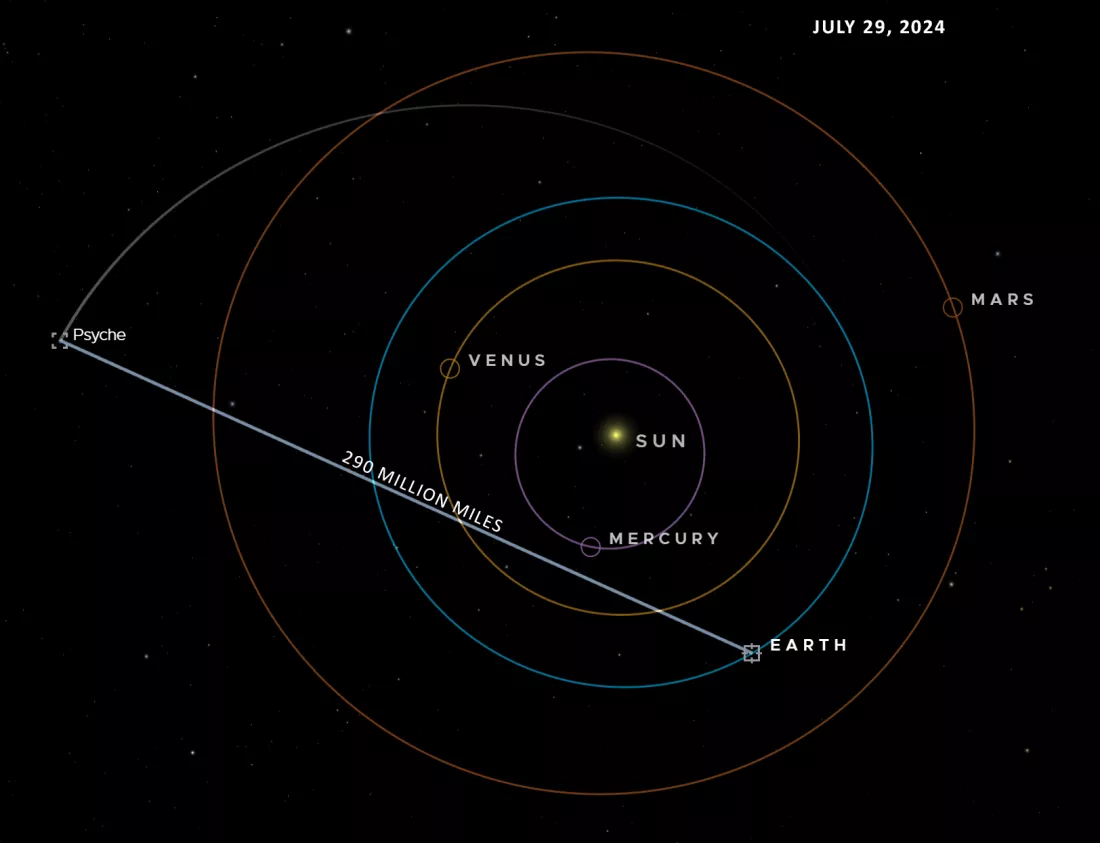NASA just fired up its cosmic laser pointer and hit a bullseye 290 million miles away, successfully transmitting data via laser between what’s roughly the maximum distance between Earth and Mars.
Launched last October, NASA’s Deep Space Optical Communications experiment uses near-infrared laser beams to send information across mind-boggling distances. This cutting-edge tech allows for data transmission up to 100 times faster than traditional radio systems.
Now that the transmission and telemetry tasks have been successfully completed, the agency announced that the first phase of its comms program is completed. “Now the techniques we use to track and point have been verified, confirming that optical communications can be a robust and transformative way to explore the solar system,” said Meera Srinivasan, the project’s operations lead at NASA’s Jet Propulsion Laboratory in Southern California.

Image: NASA
NASA was able to stream HD videos from the Psyche spacecraft and receive them on Earth without minimal quality loss. The videos are nothing special, really—the most recent one is an old-fashioned montage, whereas the first one, streamed last year at a lower distance, featured a cat playing around.
To test the Deep Space comm’s capabilities, the team beamed down some unconventional payloads alongside engineering data. In December, from 19 million miles away, DSOC made history by transmitting the first ultra-high-definition video from deep space—starring a cat named Taters.
Even when Psyche was a mere 33 million miles out, the experiment demonstrated speeds of 267 megabits per second, rivaling home broadband connections. As the spacecraft ventured further into the cosmos, transmission rates have slowed but still vastly outperform conventional methods.
At 240 million miles from Earth, the laser beam-system sustained 6.25 megabits per second with peaks of 8.3 megabits—just enough to stream Netflix, and easily beating traditional radio signals used in normal spatial comms.
Now that the experiment is over, NASA will power down the flight transceiver and will turn it back on next month to test whether the hardware is good enough to operate for at least one year.
This is already a promising advance for space telecoms. The experimental system can achieve data rates that are up to 100 times higher than current state-of-the-art radio systems without having to use heavier or bulkier equipment. The system is also comparable to traditional radios, in terms of energy requirements.
The system relies on a flight laser transceiver aboard Psyche, working in tandem with ground stations on Earth. Caltech's massive 200-inch Hale Telescope serves as the downlink receiver, while JPL's Table Mountain facility handles uplink duties with 7 kilowatts of laser power.
The Deep Space Optical Communications project is set to enter its second phase in January 2025 and last until October 2025 after two years of testing and optimization of optical communication technologies.
With nearly 11 terabits of data downlinked during its first operational phase, the project has proven its mettle as a game-changing technology for future space exploration. Now that humanity is setting its sights on new spatial frontiers, laser communications could enable the transmission of complex scientific information, high-definition imagery, and even live cat video feeds for our future Mars settlers.
Edited by Andrew Hayward
免责声明:本文章仅代表作者个人观点,不代表本平台的立场和观点。本文章仅供信息分享,不构成对任何人的任何投资建议。用户与作者之间的任何争议,与本平台无关。如网页中刊载的文章或图片涉及侵权,请提供相关的权利证明和身份证明发送邮件到support@aicoin.com,本平台相关工作人员将会进行核查。




